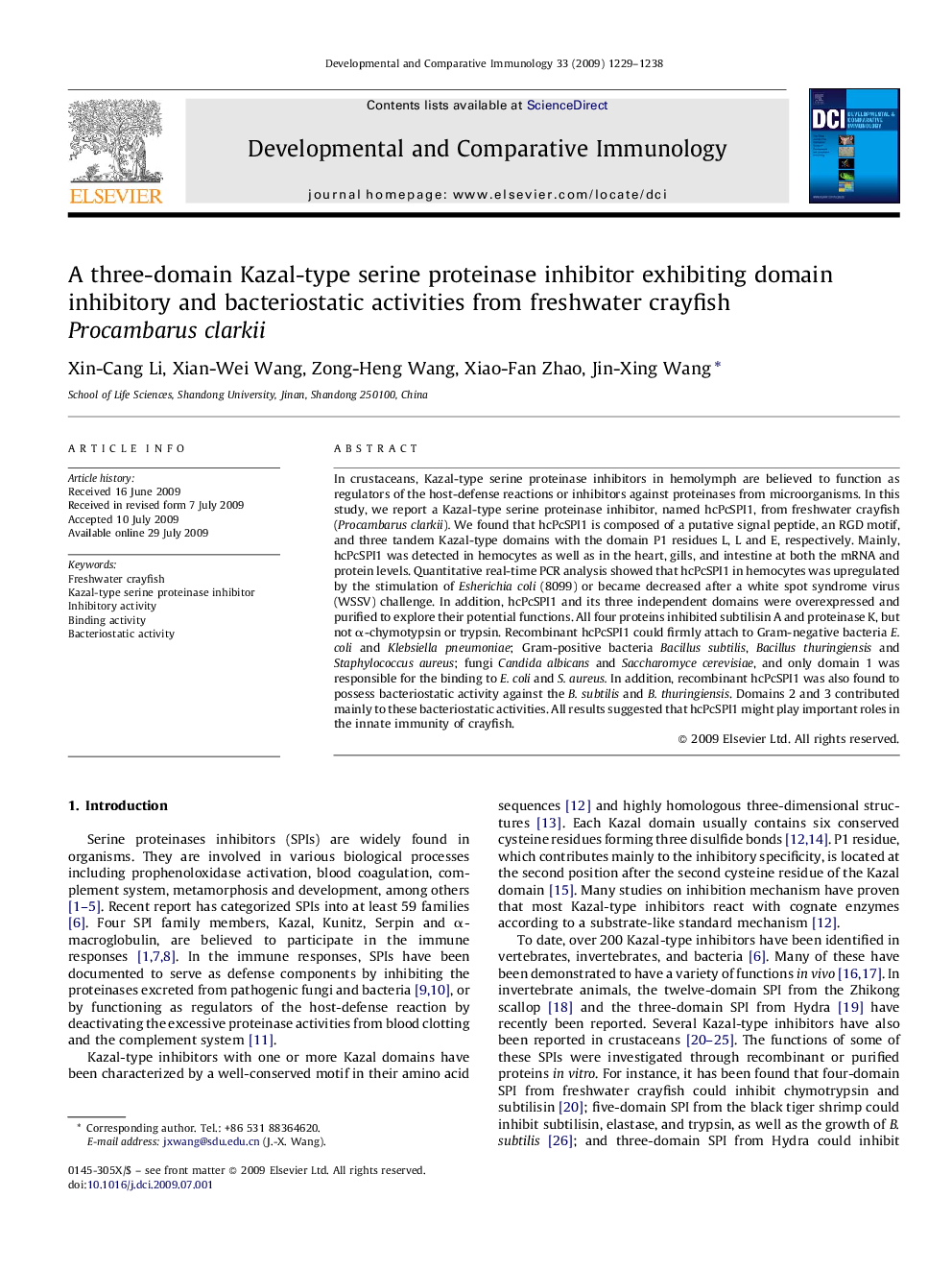| Article ID | Journal | Published Year | Pages | File Type |
|---|---|---|---|---|
| 2430193 | Developmental & Comparative Immunology | 2009 | 10 Pages |
In crustaceans, Kazal-type serine proteinase inhibitors in hemolymph are believed to function as regulators of the host-defense reactions or inhibitors against proteinases from microorganisms. In this study, we report a Kazal-type serine proteinase inhibitor, named hcPcSPI1, from freshwater crayfish (Procambarus clarkii). We found that hcPcSPI1 is composed of a putative signal peptide, an RGD motif, and three tandem Kazal-type domains with the domain P1 residues L, L and E, respectively. Mainly, hcPcSPI1 was detected in hemocytes as well as in the heart, gills, and intestine at both the mRNA and protein levels. Quantitative real-time PCR analysis showed that hcPcSPI1 in hemocytes was upregulated by the stimulation of Esherichia coli (8099) or became decreased after a white spot syndrome virus (WSSV) challenge. In addition, hcPcSPI1 and its three independent domains were overexpressed and purified to explore their potential functions. All four proteins inhibited subtilisin A and proteinase K, but not α-chymotypsin or trypsin. Recombinant hcPcSPI1 could firmly attach to Gram-negative bacteria E. coli and Klebsiella pneumoniae; Gram-positive bacteria Bacillus subtilis, Bacillus thuringiensis and Staphylococcus aureus; fungi Candida albicans and Saccharomyce cerevisiae, and only domain 1 was responsible for the binding to E. coli and S. aureus. In addition, recombinant hcPcSPI1 was also found to possess bacteriostatic activity against the B. subtilis and B. thuringiensis. Domains 2 and 3 contributed mainly to these bacteriostatic activities. All results suggested that hcPcSPI1 might play important roles in the innate immunity of crayfish.
